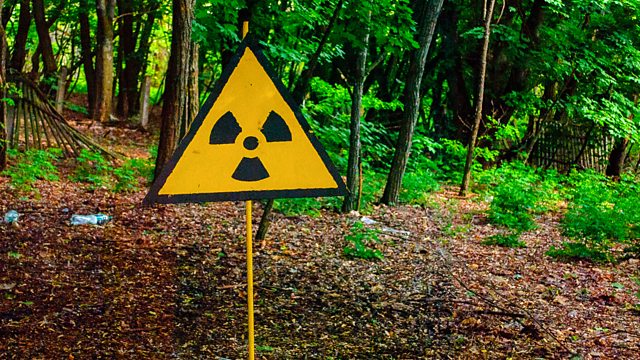Radioactive Red Forest
Are Russian troops in forests around Chernobyl receiving a dangerous dose of radiation?
Russian forces in the forested exclusion zone around the Chernobyl nuclear site may be receiving potentially dangerous levels of radiation. After the nuclear accident trees were felled and radioactive material was buried across the site. As the forest regrew its took up much of that radiation - making it the most radioactive forest in the world according to Tom Scott from Bristol University who studies radiation levels in the region. The troop's activities, from digging trenches to lighting fires as missiles are fired, may be releasing radiation. Its unclear how dangerous this is, but those with the greatest and most immediate exposure risk are the troops themselves.
Australia’s iconic Great Barrier Reef has suffered a mass bleaching event – where coral can be killed by rising temperatures. This is the latest in a series of such events which also affect other reefs. Kate Quigley from The Australian Institute of Marine Science is working to breed corals that can be more heat tolerant. However, she says this is not a solution in itself without addressing climate change and continued ocean warming.
Understanding the human genome has reached a new milestone, with a new analysis that digs deep into areas previously dismissed as ‘junk DNA’ but which may actually play a key role in diseases such as cancer and a range of developmental conditions. Karen Miga from the University of California, Santa Cruz is one of the leaders of the collaboration behind the new findings.
And can fish do maths? Yes according to Vera Schlussel from the University of Bonn. Her group managed to train fish in both addition and subtraction.
Many animals undertake remarkable migratory journeys; travelling thousands of miles only to return to same burrow or beach they departed from. Yet, unlike humans, they don’t have digital or paper maps to guide their way, so how are they able to orientate themselves with such accuracy?
In the second part of this migration story, CrowdScience’s Anand Jagatia explores how animals are able to navigate using the sun, stars, smells, landmarks and magnetism to help guide them. Anand journeys to the coast of Florida where he helps to place a satellite tracker on a sea turtle in order to follow the long-distance journeys of these animals. He then visits a lab in North Carolina to meet a team that is recreating the earth’s magnetic fields to examine how sea turtles might be using these forces to find their feeding and nesting grounds.
Anand wades into the hotly contested topic of just how birds may be sensing magnetic fields – and hears about one of the latest theories that suggests birds eyes may be exploiting quantum physics. The range of navigational tools we encounter throughout the animal kingdom from whales to ants is beguiling, Anand asks what does our increased understanding of these feats might mean for animal conservation as well as human development of mapping systems.
(Image: Radiation hazard sign in Pripyat, a ghost town in northern Ukraine, evacuated the day after the Chernobyl disaster. Credit: Getty Images)
Last on
More episodes
Previous
Broadcasts
- Sat 2 Apr 2022 23:06GMT����ý World Service South Asia & East Asia only
- Sun 3 Apr 2022 00:06GMT����ý World Service except East Asia & South Asia
Podcast
-
![]()
Unexpected Elements
The news you know, the science you don't


